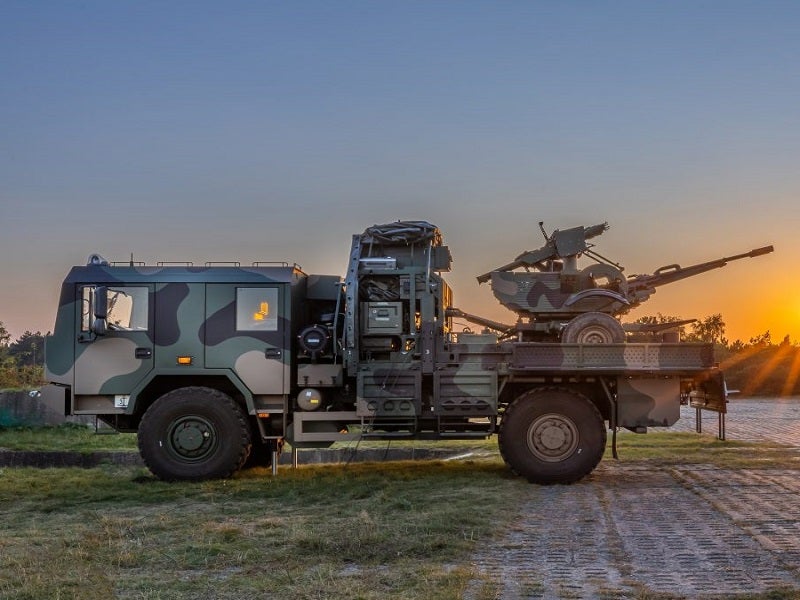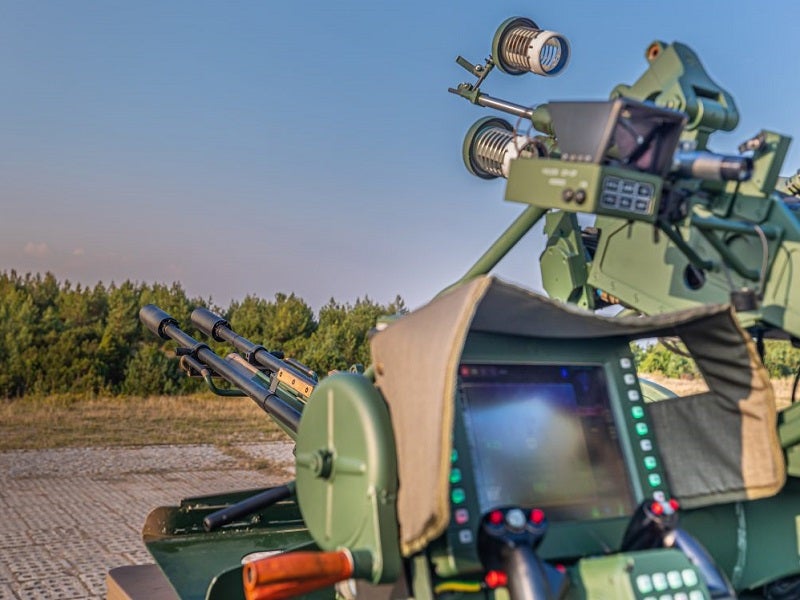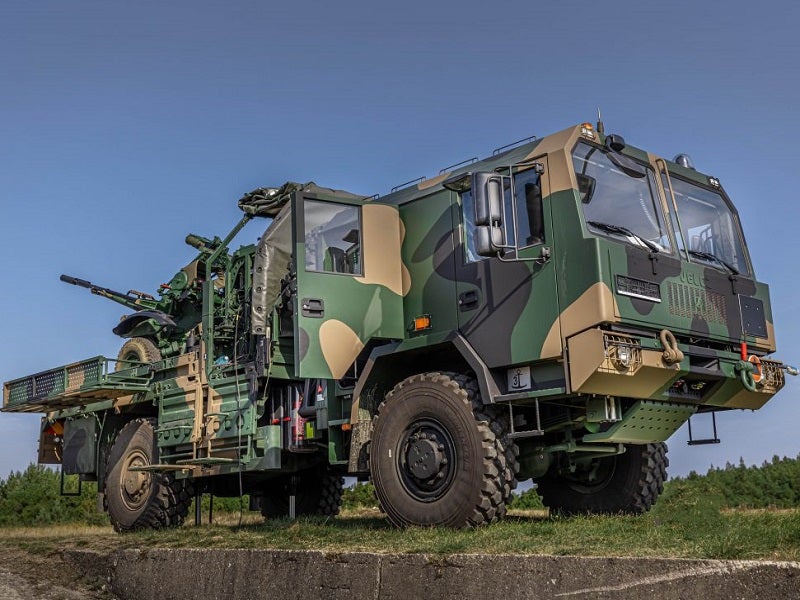The Pilica anti-aircraft missile and artillery system (PSR-A) is a very short-range air defence system (V-SHORAD) developed by a Polish defence consortium, known as PGZ-PILICA Consortium, for the armed forces of Poland. It is capable of destroying aerial targets, including unmanned aerial vehicles (UAVs), aircraft, helicopters, and cruise missiles.
The PGZ PILICA consortium, which was established in April 2016, comprises Polska Grupa Zbrojeniowa (PGZ) and its affiliates Pit-Radwar, PCO, and Zakłady Mechaniczne Tarnów (ZMT). PGZ is the project leader and coordinates the work, while ZMT is the prime system integrator for the programme.
Pit-Radwar is responsible for the integration of the radars into the anti-aircraft system, while PCO is providing the opto-electronic heads.
Pilica anti-aircraft missile and artillery system orders and deliveries
The original PSR-A PILICA contract worth about zl750m ($211.38m) was awarded in 2016. A contract annexe for the production and integration of the system was signed between the PGZ-PILICA Consortium and the Armament Inspectorate of the Polish Ministry of National Defense in October 2018.
Jelcz, which is a part of PGZ, received a contract worth zl70m ($19.7m) for the supply of the base chassis of the PSR-A Pilica system. The company will deliver 66 vehicles under the contract.
The Pilica programme includes the delivery of six batteries of the PSR-A Pilica for the Polish Army. The production began in December 2017, while the first battery was handed over to the Third Air Defense Missile Brigade of Polish Armed Forces in December 2020.
Pilica anti-aircraft missile and artillery system features and mission capabilities
Each battery comprises six fire units with artillery tractors, a radar station, a command post, two ammunition vehicles, and two transport vehicles. The artillery tractors are used to haul and transport the firing unit. The tractor can accommodate four persons and features storage space for ammunition and maintenance equipment.
The V-SHORAD system can provide defence covering an area of about 350km². The missile and artillery system is suitable for the protection of command posts or large areas such as military units, airports, and logistics bases against any kind of air assault.
It will be able to operate alongside the command and air defence systems of NATO countries. The system is equipped with the autonomous power supply system, which enables operations in difficult conditions.
Chassis of Pilica Anti-Aircraft Missile and Artillery System
The Jelcz JELCZ 442.32 S04, JELCZ 442.32 S02 and JELCZ 442.32 P06 car models were selected as base landing gears for the air defence system. The Jelcz 4×4 vehicles are suitable to operate on hard surfaces and in off-road conditions. They can be used to transport hazardous materials and objects, material supplies, and specialist equipment.
Each battery is operated by 11 vehicles used to transport command posts, fire units, and other system components.
Ammunition carried on Pilica PSR-A air defence system
The PILICA PSR-A can be mounted with coaxial 23mm 2A14 cannons and modern Grom/Piorun anti-aircraft missiles. Each air defence fire unit consists of two 23mm calibre automatic cannons and two Grom/Piorun anti-aircraft missile launchers.
The cannons firing unit has a range of 2,000m with high explosive incendiary – tracer (HEI-T) and armour-piercing incendiary (API). The defence system can achieve a maximum firing range of 5,500m with Grom and 6,500m with Piorun.
Navigation on Pilica Anti-Aircraft Missile System
An integral subsystem enables the detection and identification of targets, as well as combat and object management. The high speed of object tracking and detection allows Pilica to destroy aircraft and combat helicopters.
The PILICA distributes separate tasks and commands through an automated approach once the targets are detected and identified.
Command and control
The command post vehicle features a command terminal and a combat fire control panel. A communication box in the vehicle’s cargo section enables the exchange information and data with an overriding command post and monitoring of the readiness and ongoing combat activities of the firing units.
The command post incorporates a software that can manage, guide, and control at least six firing units and a radiolocation station. The software also enhances the operational awareness of the commander-in-chief by providing connection to an external radiolocation station or an overriding command post.
Sensors and communications aboard Pilica anti-aircraft missile system
Each battery has an opto-electronic head with a thermal imaging camera and a laser range finder, which allow the Pilica system to operate autonomously and support integrated, multi-layered anti-aircraft defence.
The air defence system is equipped with a security controller, which is an autonomous electronic device responsible for communications with the Grom/Piorun launch module. The controller provides permission for the launch process to begin. It is also responsible for supervising the cooling system located on the rocket launch table, as well as blocking the rockets in a safe positions.
An immobiliser is fitted to prevent the unauthorised use of the security controller by blocking the activation of the arming. Additionally, the controller features sensors that control missile and artillery circuits.
Fire control system
The PSR-A Pilica features a ‘Dyga’ onboard computer and other identical equipment for fire control.
The safety controller transmits the information regarding the status of the arming of the weapons to the onboard computer. The security control device can control the remote operation of the armament by communicating with the fire control system’s computer.
The fire control system can be placed away from the missile system for safety during remote operation. The safe mode is activated when systems such as the computer, steering wheel, or propulsion system suffer damage. In such instances the safety control device receives the data from the CP-1 sight keyboard and controls the missile and artillery circuits.






